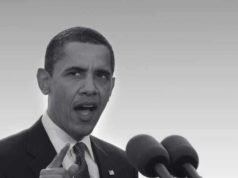
What was the Lend-Lease Act of 1941?
The Lend-Lease Act of 1941 was a program instituted by the United States of America and signed by President Franklin Roosevelt on March 11, 1941; 4 months before the United States became directly involved in World War II. The Lend-Lease Act was initiated due to America's looming involvement in World War II. During the period before the enactment of The Lend-Lease Act the United States had instituted a peacetime draft and had increased its defense budget 5 fold. Yet, the United States still wished to maintain its neutral status. As of 1941 the British were the only nation capable of engaging in war with Germany.
The Lend-Lease Act ordered the delivery of war materials to the allied nations of World War II. The "aide" took the form of military supplies of which the allied nations were required to return military goods. In return the United States would receive food, access to military bases, and logistical support from the allied nations. Its major goal was to supply the United Kingdom, France, China, and the Soviet Union with supplies to combat the Axis powers during World War II while avoiding the United States direct military involvement in the war. The Lend-Lease Act was essential to circumvent the prohibitions of the Neutrality Acts.
What were the Neutrality Acts?
The Neutrality Acts were a series of Acts that were passed by Congress, starting in 1935, that limited the United States involvement in foreign conflicts. The Neutrality Act of 1935 initiated an embargo on trading in arms and war materials with all parties associated with military conflict. The Act was instituted over the growing disdain in the United States over the nation's involvement in World War I. Many Americans felt that the use of American troops and military supplies during the First World War was a usurpation of power and an unnecessary meddling in foreign affairs. As such the Neutralization Act was intended to prohibit any involvement in foreign affairs and impose a doctrine of neutrality in foreign conflicts.
Critics of the Act, especially democrats, insisted that the Neutrality Acts essentially gave aid to the enemies of the United States. The theory was based on the idea that if the United States military is prevented from any form of involvement in a conflict, those enemies of the United States would benefit from the non-intervention of American forces.
The Neutrality Act was renewed in 1936 and again in 1937. During the renewal process of the Neutrality Act, congress conceded leeway to the President by initiating a "cash and carry" program. Under the "cash and carry" program the United States could permit the sale of materials and supplies to nations involved in foreign conflict as long as the recipients of those supplies arranged for the transport and paid for the supplies in cash. This program allowed the United States to aid Great Britain and France in the conflict with Germany while, at the same time, minimizing any direct involvement in the conflict.
The Destroyers for Bases Agreement
The Destroyers for Bases Agreement was essentially a pre-cursor to the Lend-Lease Act of 1941. The Destroyers for Bases Agreement was enacted in 1940 in response to Germany's increasing success during the beginning of World War II. The British forces were in desperate need of ships to fight as the German armies moved quickly into France.
In response the United States agreed to deliver 50 warships, left over from World War I, in exchange for ninety-nine year, rent free leases in various locations including: Newfoundland; the Bahamas; Jamaica; St. Lucia; Trinidad; Antigua; and British Guiana. Like the Lend-Lease Act; that would come into being in less than a year, The Destroyers for Bases Agreement was intended to circumvent the prohibition on involvement in foreign affairs that was required in the Neutralization Act.
Passage of the Lend-Lease Act of 1941
As the War in Europe escalated the sentiments amongst the American people began to change. Where most Americans were adamant about the United States non-involvement in a strictly European conflict, as is shown by the overwhelming support for the Neutrality Act of 1935, the campaigns of Germany and Japan were beginning to change the isolationist movement in this country.
When the Lend-Lease Act came before Congress it fell along party lines, with the Lend-Lease Act passing largely due to a majority of Democrats in both the House and Senate. In the House, the bill passed by 260 to 165 and 59 to 30 in the Senate.
This ac gave the president the authority to "sell, transfer title to, exchange, lease, lend, or otherwise dispose of, to any such government [whose defense the President deems vital to the defense of the United States] any defense article."
Aid under the Lend-Lease Act of 1941
The Lend-Lease act was essential for the maintenance of the war effort by the allied forces. The nations currently involved in the war were required to devote all their manufacturing capabilities to developing weapons and military supplies. As such, the production of non-essentials such as food stuffs and other supplies were ceased. In response, part of the Lend-Lease act involved the supplying of food and manufactured goods in order to maintain the integrity of the European environment.
An example of this was the influx of materials for railroads in the Soviet Union. Due to the transfer of labor to the development of war materials, the Soviet Union lapsed in its maintenance of their railroad system. As a result, part of the Lend-Lease Act involved the shipment of 2,000 locomotives and 11,000 railcars.
In all from 1941 until the end of the war the Lend-Lease Act cost the United States almost $51 billion, with the majority going to Great Britain, the Soviet Union, France, China and Brazil. The U.S. also received billions of dollars worth of goods through reverse lend-lease.
Reverse Lend-Lease
In addition to the Lend-Lease Act a reverse lend-lease scheme also existed where goods and services were given to the United States. As American forces began arriving in Europe, Britain provided material assistance such as the use of fighter jets. In addition the Allied Nations often provided food, bases, and other logistical support. Other Lead-Lease items included patrol boats. Through the course of the war, the US received around $7.8 billion in Reverse Lend-Lease aid with $6.8 of it coming from Britain and other allied nations.
Lend-Lease Act expires
The Lend-Lease program essentially expired when the allied nations, specifically Great Britain, retained most of the equipment supplied to them through the Lend-Lease Act. Great Britain paid roughly 10% of the original value of the goods.
More about Lend-Lease Act
Public Law 77-11 or the Lend-Lease Act was a program by the then-neutral United States designed to help the Allied Powers during World War II. The Act was initially called An Act to Further Promote the Defense of the United States and was an admission from the United States that the success of the Allied Powers was key to the interests of the United States. While this was not an official entry into World War II, it effectively ended American neutrality and caused Nazi Germany to attack American shipping as a means to weaken Britain, France and the Soviet Union.
What were the provisions of the Lend-Lease Act?
In December of 1940, a full year before American entry into the war, President Roosevelt declared that the United States should act as the “Arsenal of Democracy” and offer unequivocal material support for Britain and France. The Lend Lease Act became law on March 11, 1941 and the Office of Lend Lease was set up to administer the program and the National Munitions Control Board provided license to sell weapons to belligerent nations. The Secretaries of War and Navy were given the authority to procure weapons for the purpose of the Lend Lease Act.
The Lend Lease Act allowed for the manufacturer and transfer of war goods to any nation deemed vital to the defense interests of the United States. It did not provide for American vessels to carry the goods, although American ships sometimes escorted the ships past German blockades. The Lend Lease Act also did not provide for the use of American armed forces, but only the manufacture, repair and procurement of weapons for American allies. It is worth noting that Section 9 of the Act gave the President the right to skirt regulations to carry out the provisions of the Act and direct agencies accordingly. This is likely why American military ships were escorting the British cargo ships in convey, contrary to provisions in the Lend Lease Act that did not allow it.
The Lend Lease Act would have expired on June 30, 1946, if the war had not ended in the summer of 1945.
Why was the Lend-Lease Act arranged in this manner?
President Roosevelt offered aid to the Allies in this manner as he was constrained by the Neutrality Acts that banned the sale of weapons to warring powers. Within the neutrality act however, was a “cash and carry” provision that allowed European powers to buy weapons so long as they paid in cash and transported the goods themselves. This provision was used to support France and Britain prior to the start of the war, although that provision had expired by the time the war began in 1939.
A subsequent revision of the Neutrality Acts in 1939 passed a heavily Democratic Congress and reinstated the cash and carry policy for the belligerent nations in Europe. Britain and other allies were nearly bankrupted by the “cash and carry” provision and had largely run out of cash and assets to liquidate to continue paying for arms shipments. This led to alternative arrangements such as a bases-for-destroyers arrangement that transferred 50 “surplus” destroyers to the United Kingdom in exchange for 99 year leases on bases in the Caribbean and Newfoundland. There were also transfers of service, such as the US taking over the security of Bermuda to help with the war effort.
The practice of cash and carry, which overwhelmingly favored the Allied nations, led to hostility with Germany and the further provisions of the Lend-Lease Act convinced German submarines to attack American shipping suspected of carrying supplies to the Allies, similar to the start of hostilities in World War I. President Roosevelt responded to the new waves of attacks by declaring the right of the US to attack German submarines. The attack on Pearl Harbor happened shortly thereafter which signaled American entry into the war.
Was America repaid for the Lend Lease Act?
Shipments of aid continued after the war to help rebuild war-raved Britain after the end of the Lend-Lease on September 2, 1945. The United States did not charge allies for materials shipped under the Lend-Lease Act. Materials remaining in the United Kingdom after the end of land lease were assessed and organized into the Anglo-American loan. This continued the aid and converted the materials given to the United Kingdom into a monetary loan to be repaid in 50 payments. The last payment of $83 million dollars was made on December 29, 2006 out the 1.075 billion dollars assessed at the end of the war. $31.4 billion dollars’ worth of materials shipped to the United Kingdom through the Lend-Lease Act.







































